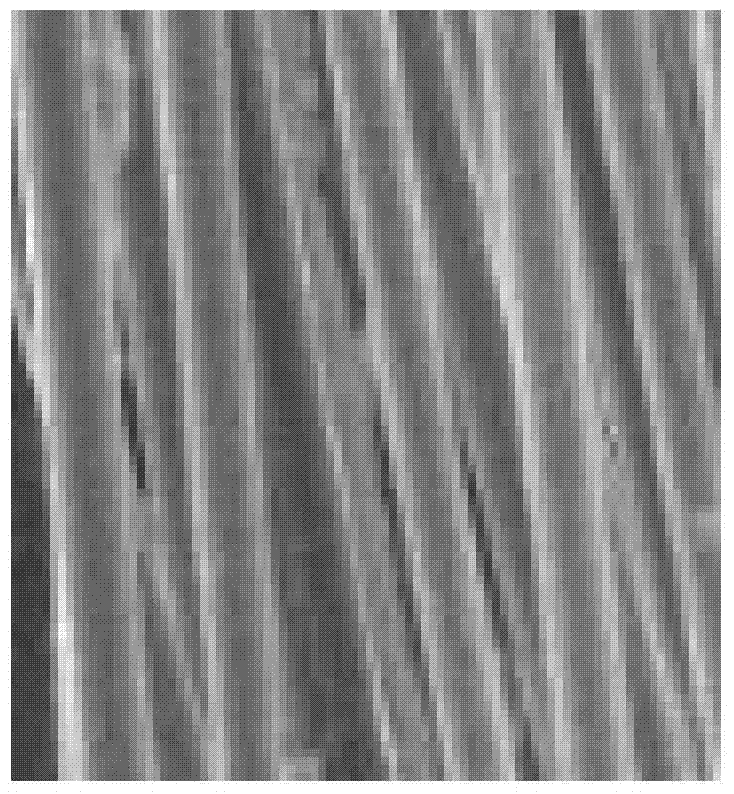Method for recovering carbon fibers from carbon fiber composite material
A technology for recycling carbon fiber and composite materials, which is applied in the field of carbon fiber recycling from carbon fiber composite materials, can solve the problems of easy carbon formation on the surface of carbon fiber, uneven performance of carbon fiber, and reduced performance of carbon fiber, so as to achieve uniform performance, shorten the time of degradation reaction, The effect of reducing energy consumption
- Summary
- Abstract
- Description
- Claims
- Application Information
AI Technical Summary
Problems solved by technology
Method used
Image
Examples
Embodiment 1
[0029] In this embodiment, the matrix resin is polypropylene, and the carbon fibers are pitch carbon fibers in the form of long fibers.
[0030] The carbon fiber composite material recovery carbon fiber method of the present embodiment comprises the following steps:
[0031] Step 1: Place the carbon fiber composite material in a microwave oven, and irradiate and heat the carbon fiber composite material in a protective atmosphere, and the carbon fiber composite material undergoes a degradation reaction in the microwave oven.
[0032] In this step, the protective atmosphere is an inert gas or a mixed gas of an inert gas and oxygen, and in the mixed gas, the oxygen content is less than or equal to 20v%. In this embodiment, the protective atmosphere is specifically an inert gas—helium; the microwave power of the microwave oven is 1KW˜100KW, specifically 5KW in this embodiment.
[0033] Step 2: After the degradation reaction is completed, the product generated by the degradation o...
Embodiment 2
[0036] The difference between this embodiment and Embodiment 1 is that step 1a is also included before step 1, the pretreatment of the carbon fiber composite material, that is, the carbon fiber composite material is divided into blocks, and in this embodiment, the carbon fiber composite material is specifically cut into A cube with an edge length of 50 cm.
[0037] The amount of carbon fiber composite material used and other steps before treatment are the same as in Example 1. After the degradation reaction is completed, the solid product is carbon fiber with a recovery rate of 99.7%, and the performance of the obtained carbon fiber is uniform.
Embodiment 3
[0039] This example differs from Example 1 in that: in step 1, the microwave power of the microwave oven is 1KW, and in step 2, the degradation reaction time is 1 hour.
[0040] The usage amount and other steps of the carbon fiber composite material before treatment are the same as in Example 1. The recovery rate of the carbon fiber in this example is 99.5%, and the performance of the obtained carbon fiber is uniform.
PUM
 Login to View More
Login to View More Abstract
Description
Claims
Application Information
 Login to View More
Login to View More - R&D
- Intellectual Property
- Life Sciences
- Materials
- Tech Scout
- Unparalleled Data Quality
- Higher Quality Content
- 60% Fewer Hallucinations
Browse by: Latest US Patents, China's latest patents, Technical Efficacy Thesaurus, Application Domain, Technology Topic, Popular Technical Reports.
© 2025 PatSnap. All rights reserved.Legal|Privacy policy|Modern Slavery Act Transparency Statement|Sitemap|About US| Contact US: help@patsnap.com

